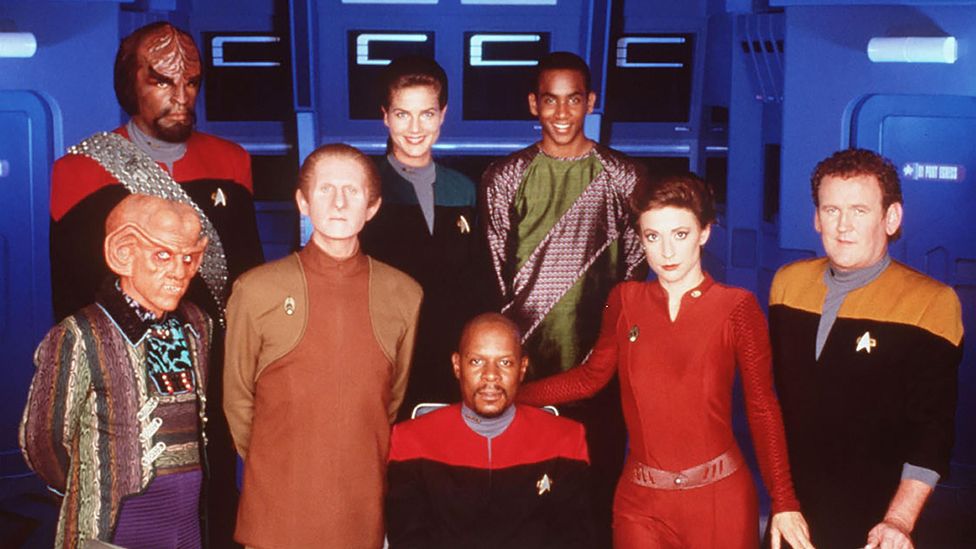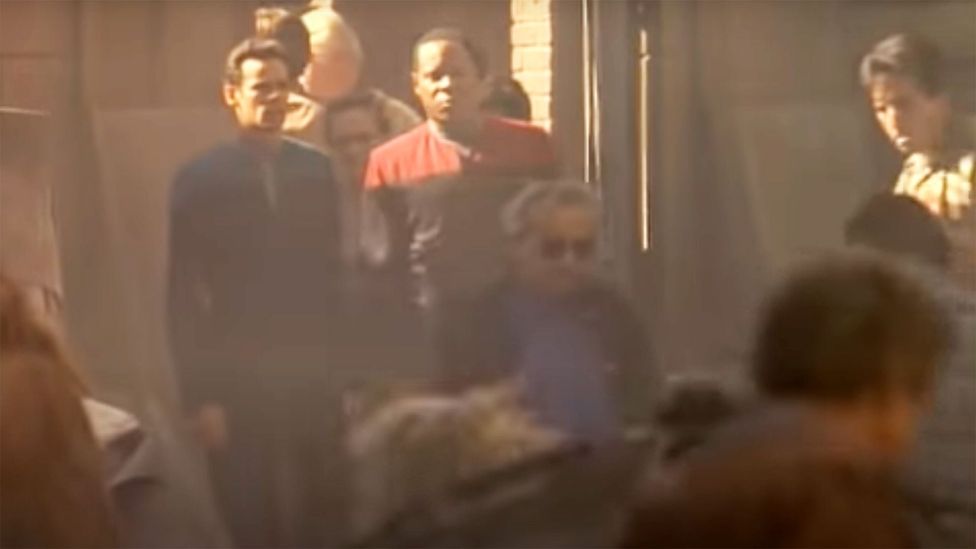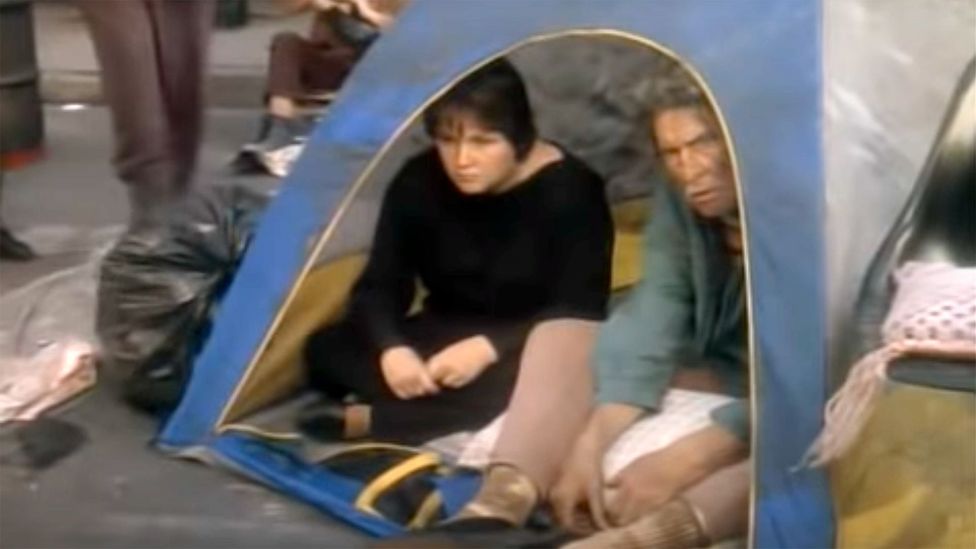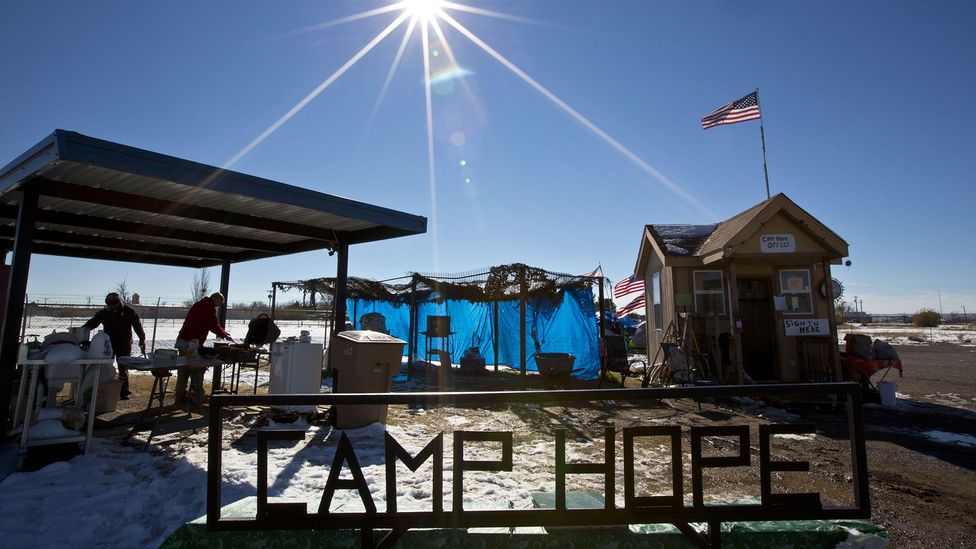Star Trek: The Deep Space Nine episode that predicted a US crisis
SOURCE: BBC
PAGINA 100
In the 1990s the Star Trek series Deep Space Nine predicted a dystopian vision of 2024 homelessness that has parallels with reality.I
It’s tempting to view fictional stories set far in the future as visions – dystopian or otherwise – of what might come to be. But the most successful works are able to survive and reach new audiences even after their predictions have been proven untrue. For instance, the perpetual war of George Orwell’s Nineteen Eighty-Four never came to pass by the year of its title. Nor did the interplanetary travel of Stanley Kubrick’s 2001: A Space Odyssey exist by the new millennium. Nonetheless, these stories remain relevant, decades on from their predicted dates, thanks to their broader insights on timeless themes – from authoritarianism to human evolution.
With 11 television series and 13 films, produced across seven decades, Star Trek has inevitably seen several predicted events on its timeline proven untrue. In the original 1960s series, Star Trek’s most famous villain, Khan, introduced viewers to the “Eugenics Wars”, a massive conflict arising in the 1990s due to experiments in human genetic engineering. Later instalments predicted more tough times ahead, with World War III scheduled to begin in 2026, followed by an era of “post-atomic horror“.

In the 90s series Star Trek: Deep Space Nine, one of humanity’s worst mistakes comes to a head in 2024 (Credit: Alamy)
These forecasts of doom are key to the franchise’s backstory, sketching out humanity’s difficult road to the idealistic 23rd and 24th Centuries, where Star Trek is primarily set. Although these predicted catastrophes seem overblown, they speak to a truth which may account for the franchise’s enduring appeal: that suffering through grave mistakes can eventually lead humanity to a more egalitarian and peaceful future.
According to 1990s series Star Trek: Deep Space Nine, one of humanity’s worst mistakes comes to a head in 2024. But unlike Star Trek’s other predictions of global disaster, this mistake exists at a more relatable level. And, as we enter the real 2024, it remains a challenge that is just as urgent as when the episodes aired.
The challenge in question is homelessness, and humanity’s mistake is to hide from the problem, rather than solving it. The issue is addressed in the two-part episode Past Tense, which aired in January 1995. This instalment sees series protagonist Commander Sisko and his crewmates accidentally transported back in time from their 24th-Century starship to San Francisco in 2024.
As they are waking from the unconsciousness of time travel, Sisko and his crew member Dr Bashir are mistakenly identified as homeless by armed officers. “There’s a law against sleeping in the street,” they tell the confused time travellers. Sisko and Bashir are escorted to a walled-off section of the city, known as a Sanctuary District. We learn that this facility is designed to separate the homeless and unemployed from the rest of society. “By the early 2020s, there was a place like this in every major city in the United States,” Sisko explains to Bashir.
Those Sanctuary Districts look like they could easily be this evening’s headlines – Michael Okuda
Shortly afterwards, Sisko, an expert in 21st-Century history, realises their arrival date is significant. He recalls that anger over the Sanctuary Districts reaches a boiling point in 2024, resulting in “one of the most violent disturbances in American history”. Sisko adds that this uprising “will change public opinion about the Sanctuaries. They’ll be torn down and the United States will finally begin correcting the social problems it has struggled with for over a hundred years.”
Inspiration for the Sanctuary Districts
On receiving this 21st-Century history lesson, the idealistic Bashir is shocked. He admits that he never educated himself about the period because he finds it “too depressing”. He may serve as a sort of proxy for the viewer’s own discomfort at confronting the issue.
This discomfort was a key inspiration for the episode writers, who believed that mid-90s America wasn’t addressing its challenges with homelessness. In a behind-the-scenes DVD feature, Deep Space Nine showrunner Ira Steven Behr recalls that a visit he made to Santa Monica inspired these episodes. “It was a beautiful day,” Behr remembers. He noticed “homeless people everywhere” and how tourists “were walking past these homeless people as if they were part of the scenery”. Taking this idea to an extreme, Behr and co-writer Robert Hewitt Wolfe imagined what a near future might look like where homelessness could be fully ignored. Thus, the idea of the Sanctuary Districts was born.

In Past Tense, Sisko and Bashir are escorted to a walled-off section of the city, known as a Sanctuary District (Credit: Paramount)
For Stephen Pimpare, senior fellow at the Carsey School of Public Policy, this concept mirrors the US government’s attitude towards homelessness in the 1990s. “The Sanctuary Districts are a means simply to remove homeless people from public view,” he tells BBC Culture. “We see this in contemporary examples from when the episodes were written. For instance, in San Francisco, when Art Agnos was mayor, there were a group of homeless people who set up an unsanctioned camp outside City Hall. It was referred to as Camp Agnos. He brought in the police and he razed it.”
Pimpare also cites Rudy Giuliani’s policies as mayor of New York City in the 1990s as part of this approach to remove homeless populations from view. This is despite the fact that just a few years earlier President Ronald Reagan signed the Stewart B McKinney Homeless Assistance Act, which provided federal money for homeless programmes.
Today, the Sanctuary Districts seem even more plausible to some who worked on the episodes. “On the eve of 2024, those Sanctuary Districts look like they could easily be this evening’s headlines,” says Michael Okuda, who served as an art supervisor on the Past Tense episodes. His wife, Denise, who also worked in the Deep Space Nine art department, agrees. “Clearly, we have failed to address the conditions contributing to homelessness in American cities,” she says. “The number of homeless people has exploded since Past Tense aired.”
In 1990, the US Census Bureau found there were 228,621 homeless people across the country. By 2023, the US Department of Housing and Urban Development estimated this number had risen to roughly 653,100 people. But collecting accurate figures on homelessness is notoriously difficult. “Data on this question are not good even today,” explains Pimpare. “They were even worse in the 1990s. So, you need to take these numbers with many grains of salt.”

In Past Tense, the Deep Space Nine writers imagined what a near future might look like where homelessness could be fully ignored (Credit: Paramount)
Nonetheless, Pimpare believes this apparent negative trend has been driven by policies that seek only to hide the problem, rather than addressing its causes. “You see this in the rhetoric that’s going on today,” he argues. “We complain about having to see people living on the street, rather than complaining about the issues that make it impossible for them to have shelter.”
This attitude is reflected in Star Trek’s Past Tense episodes. In addition to the Sanctuary District storyline, there is a secondary plot involving San Francisco high society. When the subject of the Sanctuary Districts comes up at an exclusive party, one attendee is oblivious to their existence: “I thought they stopped doing that,” she says. “Why would they?” another partygoer responds. “It’s the only way to keep those people off the streets.”
‘Nothing ever changes’
Deep Space Nine’s vision of Sanctuary Districts has not come true. “We don’t have these walled fortresses where we forcibly incarcerate homeless people,” Pimpare explains. “But we do have all kinds of sanctioned encampments.” For instance, in Las Cruces, New Mexico there is a designated area known as Camp Hope, where homeless people can pitch their tents and access running water and electricity. In San Diego, California there are “safe-sleeping sites“– sanctioned encampments opened in conjunction with the city’s public camping ban.
Pimpare argues these authorised encampments are “better than nothing, for a lot of people – because nothing is often what the alternative is.” But even if these policies are more benevolent than the Sanctuary Districts in Star Trek’s vision of 2024, they are still just temporary solutions.
Star Trek says tomorrow can be a better place if we are smart, if we work hard, and if we are ethical, compassionate, and inclusive – Michael Okuda
In the Past Tense episodes, long-term change only begins once the situation becomes bad enough to inspire revolt. It’s a grim conclusion, but one that is in keeping with Star Trek’s vision of how difficult the road to a more egalitarian future can be. “Star Trek never promised a utopian tomorrow,” explains Michael Okuda. “In fact, many episodes warn of what could happen if we make bad choices. However, Star Trek says tomorrow can be a better place if we are smart, if we work hard, and if we are ethical, compassionate, and inclusive.”

Camp Hope is an area in Las Cruces, New Mexico where homeless people can pitch their tents and access running water and electricity (Credit: Alamy)
Pimpare highlights one line from the episodes as a key to this idea. In a scene where Dr Bashir reassures a social worker that the situation in the Sanctuary District is not her fault, she responds: “Everybody tells themselves that and nothing ever changes.”
“That line is central to the message of the episodes,” Pimpare says. “You can’t just throw up your hands and say that the system is too big to influence. That’s how we get to those kinds of circumstances. In our real world, there are lots of things we can do to tackle homelessness.”
Michael and Denise Okuda have a similar perspective on the message of Past Tense, rooted in the original vision of Star Trek creator Gene Rodenberry. “Star Trek has always been political,” says Denise. “From the very beginning, Rodenberry designed Star Trek to use allegory,” Michael adds.
At the very start of 2024, with no Sanctuary Districts in sight, this is how the Past Tense episodes might best be viewed. Although their prediction of 2024 has proven untrue in a literal sense, the episodes carry an allegorical truth that comments on how the US approaches homelessness. But it’s also a truth that resonates far beyond those borders, speaking to an unfortunate human impulse to avert one’s eyes from suffering, rather than confront it.
Like many great works of science fiction, Star Trek continues to survive, even as another date on its timeline passes by. And Deep Space Nine’s Past Tense episodes will remain sadly relevant, as long as homelessness and inequality exist – no matter which year we are in.
PAGINA 100



